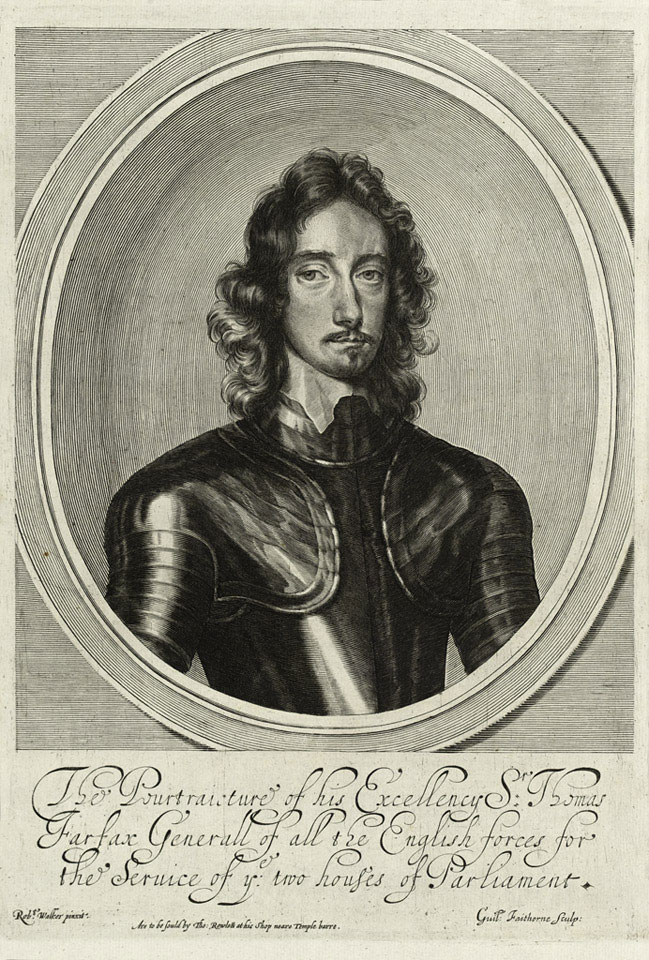
Online Collection
« Prev - 1 of 1 results - Next »
'The Pourtraiture [sic] of his Excellency Sir Thomas Fairfax Generall of all the English Forces', 1645 (c)
Engraving by W Faithorne after Robert Walker, published 1645 (c).
Fairfax (1612-1671) was arguably the most important general of the Civil War. As Commander-in-Chief of the New Model Army, he played a key role in the defeat of the Royalists, yet after the death of Oliver Cromwell he was also instrumental in the Restoration of King Charles II.
The Fairfaxes were prominent amongst gentry families supporting Parliament in northern England. Throughout 1643, often fighting against great odds, they pinned down larger Royalist forces, preventing them from marching south to reinforce the king. In a series of battles, culminating in the Parliamentarian victory at Winceby in October 1643, Fairfax established a reputation as a courageous cavalry commander, always willing to be in the thick of the action. He was also lucky (a quality which Napoleon admired in a general). Although wounded on several occasions, he survived all his injuries. By the end of 1643 he was recognised as one of Parliament's most valuable commanders.
Fairfax's victories at Nantwich in January, and Selby in April 1644, cemented his reputation. Although his command was routed at the battle of Marston Moor (July 1644) his efforts in holding out against the odds the previous year had laid the groundwork for the Parliamentarian victory.
In December 1644, at the age of just 32, Fairfax was appointed commander of the New Model Army. In less than six months, he forged the remains of three older Parliamentarian armies into a new battle-winning force. Its first test came in June 1645 at the battle of Naseby, where years of battlefield experience and an instinctive sense of timing enabled Fairfax to smash the Royalist army in just two hours. The next month he destroyed the last effective Royalist field army at the battle of Langport and followed this with a mopping up operation which culminated in the fall of Oxford, the Royalist capital, in June 1646.
Fairfax was popular with his men, but could be ruthless when circumstances demanded it. During the Second Civil War he ordered two of the captured Royalist defenders of Colchester to be shot, and in 1649 ordered the execution of a number of army mutineers.
Fairfax was out of his depth in politics and often found himself out-manoeuvred. He refused to attend the trial of Charles I in 1649 and tried to avert the king's execution. He remained in England during Cromwell's invasion of Ireland, and refused to lead the invasion of Scotland in 1650, which caused him to resign his command. Always opposed to military rule, in 1660 Fairfax raised troops in Yorkshire to support General George Monck. By neutralising Parliamentarian forces in the north, he gave Monck the chance to march south and restore King Charles II.
NAM Accession Number
NAM. 2000-05-47-1
Copyright/Ownership
National Army Museum, Out of Copyright
Location
National Army Museum, Study Collection
Object URL
https://collection.nam.ac.uk/detail.php?acc=2000-05-47-1

